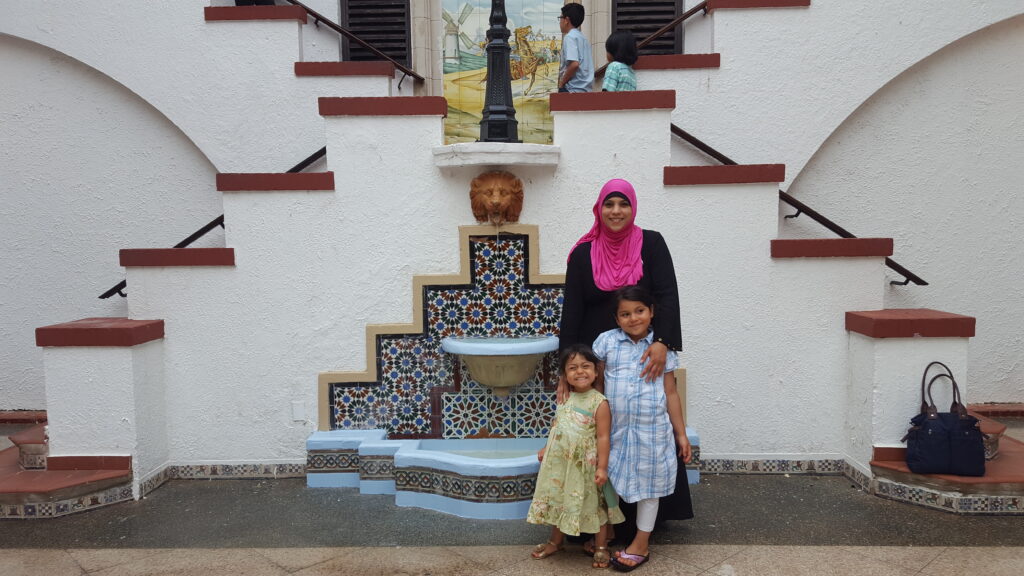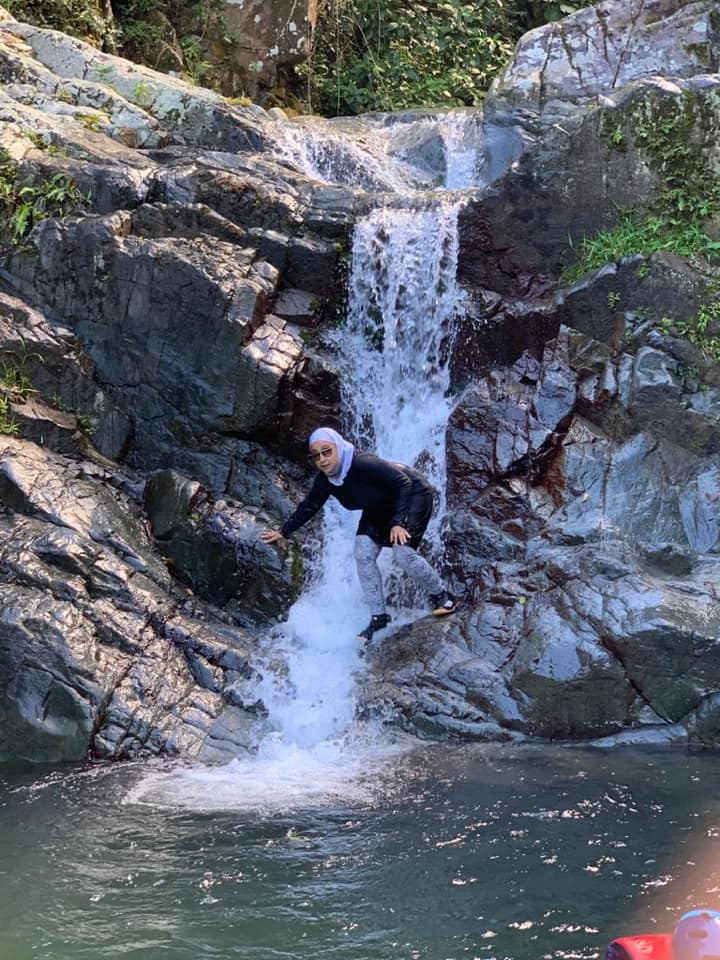Islamic Influence at Isla del Encanto
By Wendy DIaz
Sept/Oct 2023

There is a new vacation destination that is captivating the hearts of Muslims around the world. With miles of crystal-clear beaches, stretches of rainforest, architectural gems, and tantalizing cuisine, this place is a haven for those seeking both natural beauty and cultural immersion.
What surprises visitors even more is the unexpected Islamic influence that adorns this enchanting place. We are talking about none other than the Isla del Encanto, Puerto Rico. In the aftermath of the devastating Hurricanes Irma and María in 2017, Islamic relief organizations and Muslim leaders rallied together to provide aid to the affected population. Witnessing the island’s breathtaking beauty and recognizing its potential as a “halal” tourist destination, Muslims began traveling to Puerto Rico for vacations and voluntourism. This emerging destination is causing a buzz within the Muslim community in the United States, and it is no surprise. Affordable prices, gorgeous views, and a rich history intertwined with Islam make it the perfect place to visit.
Travel enthusiasts may be surprised to learn that a plane ride from the U.S. to Puerto Rico is considered a domestic flight. Puerto Rico, once a Spanish colony, was annexed by the U.S. in 1898 at the end of the Spanish-American War and has since remained its territory. Prior to Spanish colonization, Puerto Rico’s indigenous inhabitants, known as the Taíno, referred to the land as Boriken or Borinquen, meaning “the land of the valiant and noble Lord.” The term Boricua is used to describe a person of Puerto Rican origin. While often referred to as an island, Puerto Rico is an archipelago consisting of one main island and several smaller islands and islets located in the Caribbean Sea, southeast of Florida.
The Colonial History of Puerto Rico
Spain colonized Puerto Rico in the late 15th century, leading to significant changes in its religious and cultural identity. Before colonization, the indigenous Taíno people had a complex belief system rooted in nature and a connection to the divine. The arrival of Christopher Columbus and subsequent Spanish influence transformed the island’s religious landscape. His efforts were driven by the spread of Christianity and the acquisition of wealth and power at a time when the Spanish monarchs were reconquering the Iberian Peninsula from Muslim rulers. King Ferdinand II and Queen Isabela succeeded in expelling Muslims and Jews from the Iberian Peninsula in 1492. Consequently, Columbus’ voyages to the New World were funded by the spoils of war gained with the defeat of the final Muslim stronghold in Granada.

The Doctrine of Discovery, issued by Pope Alexander VI in 1493 (Inter Caetera), authorized Spain and Portugal to colonize the Americas and its Native peoples as subjects. Only recently rescinded on March 30, 2023, it provided religious and legal justification for Spanish exploration and colonization, marking the beginning of the colonial era in the Caribbean. This religious document resulted in the forced conversion and exploitation of the native inhabitants of the newly discovered islands, including Puerto Rico’s Taíno.
Spanish settlers reshaped Puerto Rico’s cultural and sociopolitical landscape over a period of three hundred years from the 16th to 19th centuries. They imposed their culture, language, and religious beliefs on the indigenous population. Islamic influences may have been present in the early Spanish explorations and with the arrival of crypto-Muslims (Muslims pretending to be Christians), descendants of the Moors of Spain, and enslaved Africans, many of whom were Wolof Muslims. Later migrations of North and West Africans and Middle Easterners would solidify the Muslim presence in Puerto Rico in the 19th and 20th centuries. Puerto Rico evolved into a melting pot of diverse traditions and a new Puerto Rican identity emerged over time, blending elements of Spanish, African, and indigenous heritage.
American colonialism followed Spanish rule in Puerto Rico after the Spanish-American War. The American government sought to assert control over the island and introduced English language schools, American laws, and Protestant missionary work. However, Puerto Ricans largely maintained their Spanish, African, and indigenous identities. The process of colonization and the interplay of different cultures gave rise to a unique syncretism, reflected in language, music, dance, and religious practices. This new identity continues to evolve, driven by ongoing efforts to reclaim lost heritage and resist the effects of colonialism. While Catholicism remains dominant, other faiths, including Islam, are also flourishing on the island.
The Muslims of Puerto Rico
From the early to mid-1900’s, Puerto Rico welcomed the migration of former citizens of the Ottoman Empire and Arabs, particularly Palestinians, fleeing political turmoil and seeking business opportunities. Today, the Muslim community in Puerto Rico consists mostly of Middle Eastern and Asian immigrants and their descendants. Palestinians make up the majority, residing in large cities like San Juan, Caguas, and Ponce, where they have established Islamic centers and thriving businesses. The influence of the prominent Arab Muslim community is evident in the presence of nine mosques scattered across the island, where services are conducted in Arabic.
Alongside recent Arab immigrants, there are also Puerto Ricans with roots on the island who are converting to Islam. Puerto Rican Muslims, both on the island and in the diaspora, have contributed to the growth of the Muslim community and formed organizations to serve the needs of Latin American Muslims. While there is no accurate measure of the Muslim population, anecdotal evidence suggests an increasing number of local converts in Puerto Rico’s mosques.

A Halal Tour Guide
One Puerto Rican convert who is raising awareness about her homeland’s Islamic roots through what she calls “halal” tourism is Carolina resident Miriam Colón. Miriam is a Puerto Rican Muslim who embraced Islam in 2001 while studying in New Jersey. The Covid-19 pandemic prompted her to reevaluate her priorities and move back to Puerto Rico to be closer to family.
During that time, Miriam found the opportunity to pursue her passion project: becoming a tour guide and establishing Islam en/in Puerto Rico. Settling in Orocovis, she completed a tourism course and developed a successful business plan that combines community project management, outreach efforts, and halal tourism. This venture allows her to serve and educate residents and guests of Puerto Rico while fulfilling her spiritual aspirations.
Miriam’s curiosity about the Andalusian architecture in Old San Juan led her to explore the history of Islam in Puerto Rico. She said, “I read what I could find on the web, but I wanted to visit and get to know the Muslims there.” She initially sought information online, but moving to Puerto Rico was a turning point. She said, “Living here has definitely played a huge role in being able to benefit the future growth potential of Islam on the Island.”
As a tour guide specializing in Islamic-inspired architecture and culture, Miriam has led over 100 tours in Puerto Rico since June 2021. These tours have catered to both Muslims and non-Muslims, including humanitarian organizations like Islamic Relief, COSSAO, and local initiatives. Her clients have included imams, who have visited Puerto Rico to vacation with family or provide services. The overall impression from those who have experienced her tours has been extremely positive. Find out more on social media @islamenpuertorico
An Enduring Islamic Legacy
Miriam now serves as a guide to help others discover the hidden cultural gems of Puerto Rico. Islamic influence can be found everywhere, from the language of its people to the architectural masterpieces of the Spanish colonial period. Phrases like ojalá, which is derived from the Arabic “in sha’Allah” or “law sha Allah” (God willing), and words like arroz (rice), azúcar (sugar), and barrio (neighborhood) are part Puerto Rican Spanish echoing its Arabic heritage. In Old San Juan, a UNESCO World Heritage site since 1983, buildings such as La Casa de España, El Ateneo Puertorriqueño, and Moorish style haciendas give the city a unique vibe reminiscent of Southern Spain and North Africa.
Puerto Rico’s cuisine reflects the flavors of the island’s diverse cultural influences, including African, Mediterranean, and Spanish flavors that trace their roots to the Islamic Golden Age in the Iberian Peninsula. An example of this culinary fusion is seen in the popular dish known as pinchos, or Puerto Rican style kebabs.
In addition to language, architecture, and gastronomy, several other customs showcase the cultural influences in Puerto Rico. These include music and dance forms like bomba and plena, and traditional festivals that celebrate African and Spanish roots. Artistic traditions, such as vejigante masks, symbolizing the defeated Moors of Spain, highlight the blend of indigenous, African, and Iberian art. Furthermore, religious beliefs and superstitions demonstrate the multicultural nature of the island’s society.
Descendants of Puerto Ricans who have migrated to the U.S. and other countries, and embraced Islam, are also returning to Puerto Rico to explore their history. Mutah Beale, a famous former rapper and member of the musical group Outlawz, is an example of this phenomenon. Beale’s father was African American, and his mother was Puerto Rican. Both joined the Nation of Islam in the 1970’s, and later converted to Sunni Islam. Three years after Beale’s birth, his parents were killed but he and his siblings maintained their faith as Muslims. Beale has had a remarkable journey from being a rapper alongside the late superstar, Tupac Shakur, in the 1990s to becoming a practicing Muslim living in Saudi Arabia.
In recent years, Beale has turned his attention to his mother’s homeland, purchasing land to develop and dedicate to her legacy. In a social media post in 2022, he shared a video of his property on a hillside near El Yunque Rainforest and wrote, “Puerto Rico is my late mother’s homeland. May Allah have mercy on her. May Allah make this project a success and a way to give back to the Puerto Rican people.” Beale, who is now a successful restaurateur, has expressed his intention to give back to the island and its inhabitants by building an eco-resort and providing job opportunities for locals. His commitment is driven by this genuine personal connection and desire to make a positive impact on the local community.
With these ongoing projects that promote Puerto Rico’s rich cultural heritage, Muslims and non-Muslims can benefit from everything it has to offer. What is certain is that vacationers will continue to flock to this dream destination but will hopefully gain more than just a trip to the beach or a hike through the rainforest. Instead, they will unearth a treasure chest of Islamic history in the heart of the Caribbean.
Wendy Díaz is a Puerto Rican Muslim writer, award-winning poet, translator, and mother of six. She is the co-founder of Hablamos Islam, Inc. (https://hablamosislam.org), a non-profit organization that produces Spanish language educational resources about Islam. She is the Spanish content coordinator for the Islamic Circle of North America’s WhyIslam Project, and has also written, illustrated, and published over a dozen children’s books.
Tell us what you thought by joining our Facebook community. You can also send comments and story pitches to horizons@isna.net. Islamic Horizons does not publish unsolicited material.
